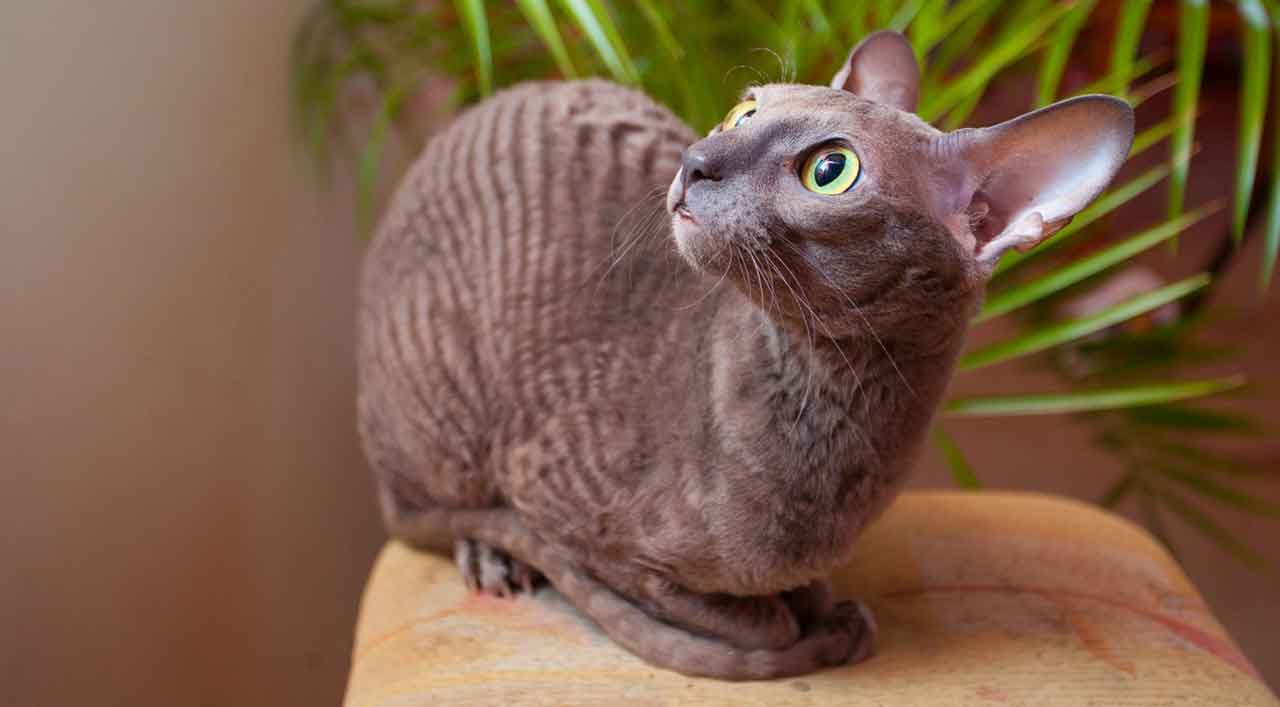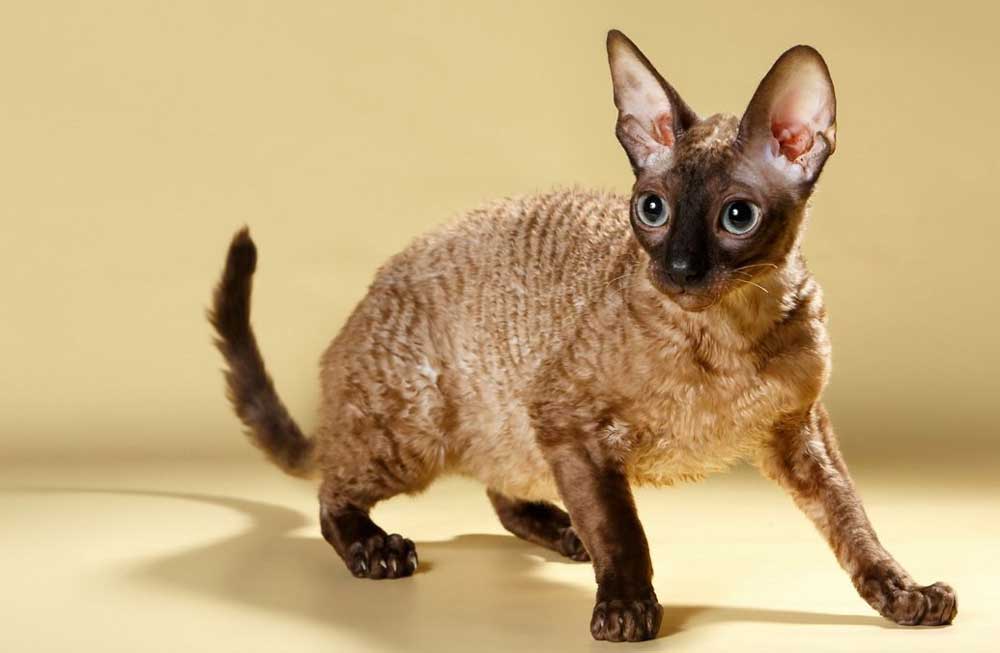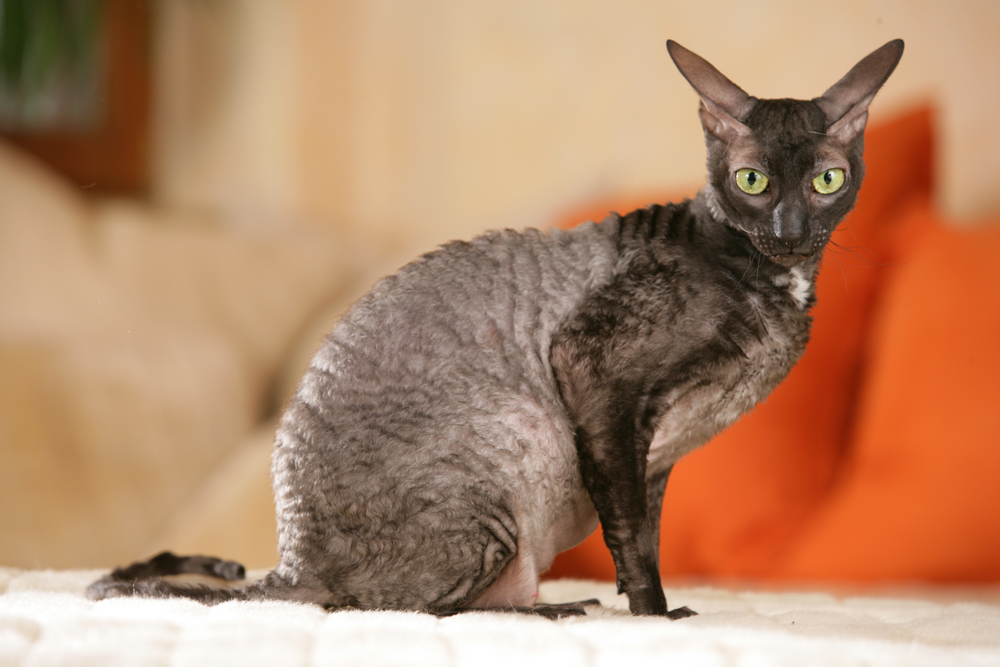Cornish Rex: The Sleek and Whimsical Athlete

History of the Cornish Rex
The Cornish Rex is a unique breed that originated in Cornwall, England, in 1950. The breed’s history began with a single curly-coated kitten named Kallibunker, born in a litter of barn cats. This kitten’s unusual fur was the result of a spontaneous genetic mutation that gave it a soft, wavy coat without the guard hairs typical of most cats. Recognizing this distinctive trait, breeders worked to preserve and develop the breed.
Kallibunker was bred back to its mother to produce more kittens with the same curly coat. Over time, other breeds such as Siamese, British Shorthairs, and Russian Blues were introduced into the breeding program to diversify the gene pool while maintaining the Cornish Rex’s signature coat and slender, athletic frame.
The breed was officially recognized in the 1960s and quickly gained popularity for its unique appearance and playful personality. Today, the Cornish Rex is cherished worldwide as an elegant and entertaining feline companion.
Popularity of the Cornish Rex
The Cornish Rex is a favorite among cat enthusiasts who appreciate its one-of-a-kind appearance and vibrant personality. Its unusual wavy coat and slender, athletic build set it apart from other breeds, making it a standout at cat shows and a beloved pet in homes around the globe. The Cornish Rex is especially popular in Europe and North America, where its affectionate and social nature has won over countless families and individuals.
Physical Traits of the Cornish Rex
The Cornish Rex is a medium-sized cat with a distinct, sleek appearance and a coat like no other.
Key Features:
• Coat: The Cornish Rex’s coat is short, soft, and curly, with no guard hairs, giving it a velvety texture. The waves are most prominent along the back and sides. It comes in a variety of colors and patterns, including solids, tabbies, bicolors, and more.
• Size: Medium, weighing 6 to 10 pounds, with females typically smaller than males.
• Head and Expression: The Cornish Rex has an egg-shaped head with prominent cheekbones, large, high-set ears, and expressive oval-shaped eyes.
• Body: Long, slender, and athletic, with a whippy tail and fine-boned legs. Despite its delicate appearance, the Cornish Rex is surprisingly muscular and agile.
Its distinct physical traits make the Cornish Rex a captivating breed, both in appearance and in movement.

Behavioral Traits of the Cornish Rex
The Cornish Rex is known for its playful, affectionate, and mischievous personality. It thrives in interactive environments where it can engage with its family members.
Key Behavioral Traits:
1. Playful and Energetic: Often referred to as the "greyhound of the cat world," the Cornish Rex is always on the move. It loves to run, jump, and play, retaining kitten-like energy well into adulthood.
2. Affectionate and Social: Bonds closely with its family and thrives on attention. This breed is known for seeking out cuddles and following its owners around the house.
3. Intelligent and Curious: The Cornish Rex is highly intelligent and enjoys exploring its surroundings. It’s quick to learn tricks and loves interactive toys that challenge its mind.
4. Vocal and Expressive: While not as loud as some breeds, the Cornish Rex has a soft, melodic voice and uses it to communicate with its owners.
5. Sociable and Friendly: Gets along well with children, other pets, and even strangers, making it a great choice for households with lots of activity.
Why Choose a Cornish Rex?
The Cornish Rex is an excellent choice for families, singles, and seniors looking for a playful, loving, and unique feline companion.
Reasons to Choose a Cornish Rex:
1. Unique Appearance: Its curly coat and sleek body make it a true standout among cat breeds.
2. Energetic and Entertaining: Perfect for homes that enjoy engaging with their pets.
3. Affectionate Nature: Thrives on interaction and loves being part of the family.
4. Low-Shedding Coat: While not hypoallergenic, the Cornish Rex sheds less than many other breeds due to its lack of guard hairs.

Caring for Your Cornish Rex
Caring for a Cornish Rex involves meeting its grooming, exercise, and social needs while maintaining its overall health.
Care Tips:
1. Grooming: The Cornish Rex’s short, fine coat requires minimal grooming. Occasionally wiping it with a damp cloth or gently brushing it helps remove natural oils and keep its skin healthy.
2. Temperature Regulation: Due to its thin coat, the Cornish Rex is sensitive to cold temperatures. Provide warm bedding and ensure your home is comfortable for your cat, especially in colder months.
3. Exercise and Enrichment: This active breed needs plenty of physical and mental stimulation. Offer climbing trees, interactive toys, and regular play sessions to keep it entertained.
4. Nutrition: Feed a balanced, high-quality diet tailored to its active lifestyle and size. Consult your veterinarian for specific nutritional recommendations.
5. Health Monitoring: Regular vet checkups are essential to monitor for potential health issues, such as heart disease or joint problems. Ensure proper dental care, as this breed may be prone to dental issues.
Ready to Welcome a Cornish Rex Into Your Home?
United Pet Club is here to help you find the perfect Cornish Rex companion. Whether you’re looking to adopt or connect with trusted breeders, we provide resources to guide you every step of the way. From grooming advice to care tips, our services ensure your new feline friend receives the love and attention it deserves.
Explore our platform to learn more about Cornish Rex cats, their unique traits, and how to care for them. Contact United Pet Club today to start your journey with this sleek and whimsical breed!
